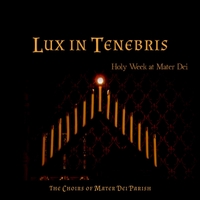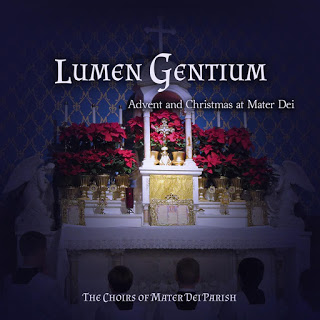An idea crossed my mind one day that I have a lot in common with the manger of Christmas morning. This comparison probably sounds quite bizarre. How is a man anything like a 2000 year old wooden trough?
What is a Manger?
To explain how I came to this comparison, let’s consider first what a manger is. A manger is a simple, open trough. Its purpose is to hold food for livestock.
Now let’s review what we know about the particular manger of the Gospel. I have emphasized the word “manger” where it appears, as well as a few words of contrast or comparison:
Gospel Narrative
And it came to pass, that when they were there, her days were accomplished, that she should be delivered. And she brought forth her firstborn son, and wrapped him up in swaddling clothes, and laid him in a manger; because there was no room for them in the inn.
And there were in the same country shepherds watching, and keeping the night watches over their flock. And behold an angel of the Lord stood by them, and the brightness of God shone round about them; and they feared with a great fear. And the angel said to them: Fear not; for, behold, I bring you good tidings of great joy, that shall be to all the people:
For, this day, is born to you a Saviour, who is Christ the Lord, in the city of David. And this shall be a sign unto you. You shall find the infant wrapped in swaddling clothes, and laid in a manger. And suddenly there was with the angel a multitude of the heavenly army, praising God, and saying: Glory to God in the highest; and on earth peace to men of good will. And it came to pass, after the angels departed from them into heaven, the shepherds said one to another: Let us go over to Bethlehem, and let us see this word that is come to pass, which the Lord hath shewed to us.
And they came with haste; and they found Mary and Joseph, and the infant lying in the manger. And seeing, they understood of the word that had been spoken to them concerning this child. And all that heard, wondered; and at those things that were told them by the shepherds. But Mary kept all these words, pondering them in her heart. And the shepherds returned, glorifying and praising God, for all the things they had heard and seen, as it was told unto them.
St. Luke 2:6-20 (Douay-Rheims)
Discussion
In its first appearance above, we see the manger contrasted with the inn. From the moment of his birth, we begin to observe that sad rejection of the Lord: “He came unto his own, and his own received him not” (St. John 1:11).
At its second appearance in the narrative, the manger demonstrably serves as a sign of recognition by which the shepherds could find the Lord.
In its third and final appearance, the manger is the animal trough which takes the role of a crib and a throne. The presence of Christ changes it from one thing to another, associating it with the fulfillment of the sign itself. “And seeing, they understood the word that had been spoken to them concerning this child.”
As with so many signs in the scriptures, I think the significance of the manger extends well beyond that of a simple landmark. Indeed, I find many similarities between the manger and myself when I receive Holy Communion.
Analogy
For starters, I am like the manger because, in my fallen state, I am a feeding ground for myriad sins, concupiscences, and base passions. There is nothing I can do on my own to get away from these “animals” that feed on me. Like the manger, I am passive and really unable to be anything else.
There are two transformations of this manger. There is first the preparation of the manger. Mary comes to the manger and arranges it with her own hands, to ready it for its moment of visitation. From that point, the animals no longer eat from the manger, and the manger is improved for a new purpose. Already, the manger is a sign of what will come. Still, the manger is passive in Mary’s hands.
The second transformation of the manger occurs the moment the Christchild is placed within it. Once the feeding ground of brutes, it is lifted up and transformed into the seat of the Savior, more like unto the Ark of the Covenant or the Temple than to a manger. Through all of this, the manger remains but a passive actor.
The analogy with myself feels so obvious, it almost goes without saying. Who could fathom that this lowly, smelly, rough manger of a man could become the throne of the Most High? Before I receive Holy Communion, how appropriate that I should ask Mary to prepare me–to arrange my soul in readiness for the coming of the Savior, just as she did for that manger of old? And to what great dignity am I raised–without any merit of my own–that I should receive the very Body, Blood, Soul, and Divinity of my Lord into my very soul? What Food is this Child, laid in this manger, in Bethlehem, the House of Bread!
Sign and Effect
But as many as received him, he gave them power to be made the sons of God, to them that believe in his name. Who are born, not of blood, nor of the will of the flesh, nor of the will of man, but of God.
St. John 1:12-13
Then Jesus said to them: Amen, amen I say unto you: Except you eat the flesh of the Son of man, and drink his blood, you shall not have life in you. He that eateth my flesh, and drinketh my blood, hath everlasting life: and I will raise him up in the last day. If any man eat of this bread, he shall live for ever; and the bread that I will give, is my flesh for the life of the world.
For my flesh is meat indeed: and my blood is drink indeed. He that eateth my flesh, and drinketh my blood, abideth in me, and I in him. As the living Father hath sent me, and I live by the Father; so he that eateth me, the same also shall live by me. This is the bread that came down from heaven. Not as your fathers did eat manna, and are dead. He that eateth this bread, shall live for ever.
St. John 6:54-59
When I receive Holy Communion, I receive a great Sign (for a sacrament is a sign instituted by Christ to give grace), but I also become a sign to others. I am a sign of faith, saying to those around me that I believe all which the Holy Catholic Church teaches. I declare that I believe in particular that it is indeed the Savior who I am receiving at that moment–just as by the sight of that manger, the shepherds saw and understood concerning the Child.
O Magnum Mysterium
With this realization in mind, I have an even greater appreciation for the hymn “O Magnum Mysterium”.
O great mystery and wonderful sacrament, that animals should see the newborn Lord, lying in a manger! Blessed is the virgin whose womb was worthy to bear the Lord, Jesus Christ. Alleluia!
Wikipedia
Indeed, I feel as if the hymn is even talking about me. O great mystery and wonderful sacrament, that this lowly manger of a man should receive the newborn Lord!
About the Featured Image
The featured image is Adoration of the Shepherds by Gerard von Honthorst. It is in the pubic domain in the United States.





